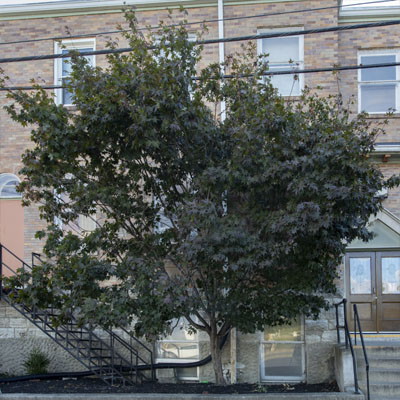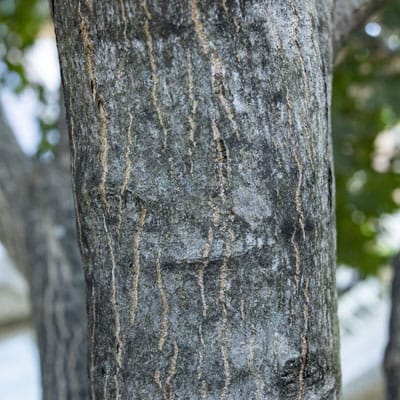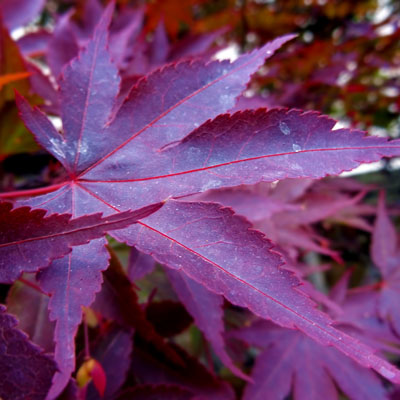Tree Catalog - Best Trees For Dayton, Ohio
Welcome to the Arbor Experts Tree Catalog, where you'll find photos and complete descriptions of the trees we most highly recommend for the Dayton, OH area. All of these trees will do well here and would be a beautiful addition to your yard.
Bloodgood Japanese Maple
Acer palmatum 'Bloodgood'




CHARACTERISTICS
As its cultivar name suggests, ‘Bloodgood’ has dark red leaves. As with most maples, it has multi-lobed, star-shaped (palmate) leaves. The dark-red leaves are more tolerant of sun than other, more delicate Japanese maples, and its color is reliable.
You can set off its striking foliage with other strong or unusual colors, such as chartreuse or variegated leaves, or let it stand out in front of dark evergreens.
GROWING TIPS
Pruning Japanese maples is an art and a science, so we recommend that you choose a maple whose mature size will fit in its location without any major pruning.
All trees should be pruned as minimally as possible, but it’s especially important for ‘Bloodgood’ and other Japanese maples; they can be easily disfigured by poor pruning and branch die back is common. We strongly recommend that these trees be professionally pruned if you’re not an experienced pruner.
Fertilize trees in spring before leaves emerge, and provide enough water during fall and winter to keep branches and twigs healthy. Apply mulch around the base of your ‘Bloodgood’ Japanese maple to keep soil cooler in summer and warmer in winter, and help keep soil moist.
This tree has no serious insect problems, though aphids and scale should be monitored.
There are also no commonly occurring diseases that attack ‘Bloodgood’, but do keep watch for a few potential disease problems, including:
- stem canker
- leaf spots
- fusarium
- verticillium
- root rot
‘Bloodgood’ tends to put out leaves in early spring, which means they may be damaged by a late frost. Planting in protected areas can reduce this chance.
THINGS TO LOOK OUT FOR
Japanese maples prefer acidic soil. Since we tend to have more alkaline soil in Dayton, you may see some leaf yellowing when the tree is planted in higher pH soils.
Avoid planting a ‘Bloodgood’ maple in an area with hot sun and winds – those conditions can cause leaves to scorch during high temperatures and windy conditions. Sufficient irrigation will help, but irrigation alone cannot ensure against leaf damage. ‘Bloodgood,’ like all Japanese maples, are native to moist and rainy climates.
Trees with diseased or inadequate root systems will also show leaf scorching. Moist, well-draining acidic soil and enough planting space for roots to expand naturally will help keep your tree healthy.
Verticillium wilt can kill trees (not just Japanese maples), so don’t plant in compacted or overly wet soil.
